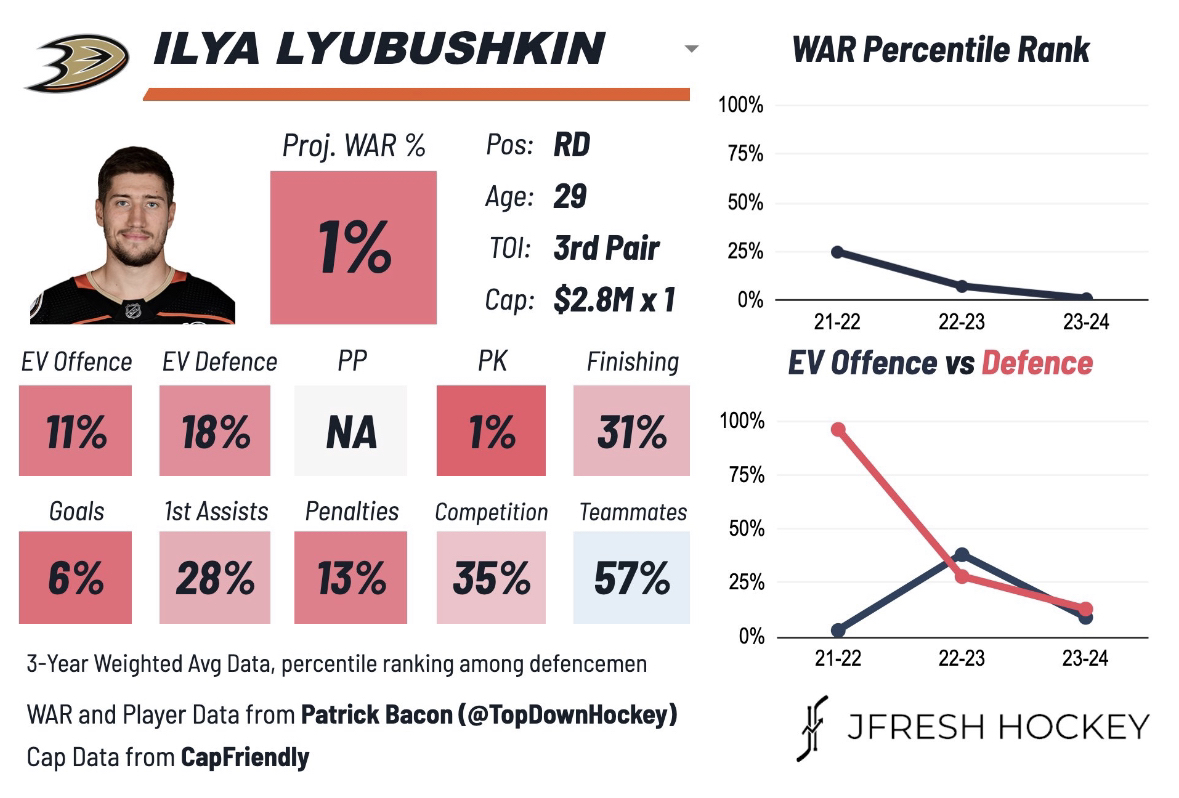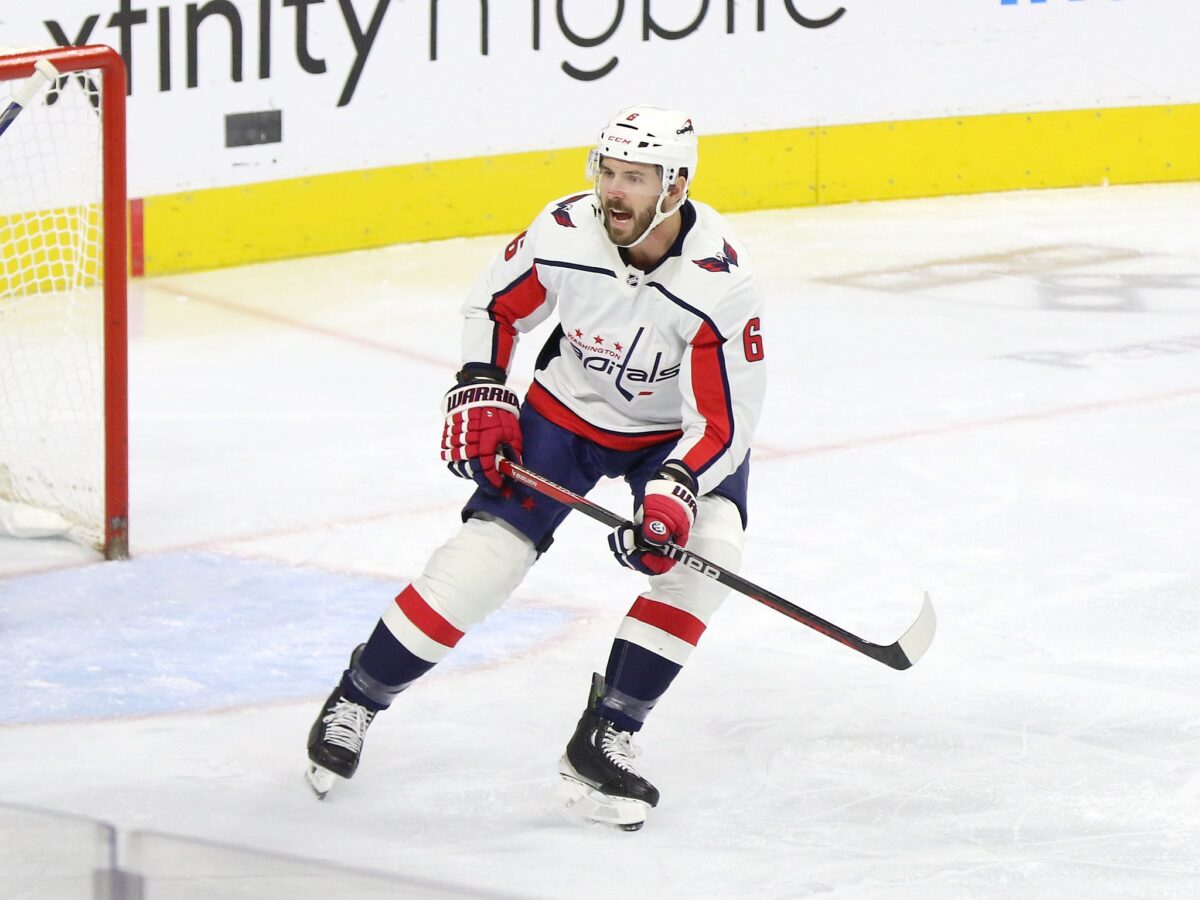The Toronto Maple Leafs entered the trade deadline with a set agenda: fix the right side on defense and address the depth goal-scoring problems that have been plaguing them all season. After Friday’s trade deadline concluded, the GM Brad Treliving didn’t solve either of those problems. In fact, he sent out a decent amount of assets for players who are arguably net negatives, even with better potential alternatives up for grabs. Unfortunately, it was a predictable unfolding of events for Treliving, considering his history with prior teams.
The Defensive Problems Were Not Solved
One issue that the Maple Leafs wanted to address with a trade at the deadline was a lack of defensive aptitude. The left side was more or less taken care of, with Morgan Rielly, T.J. Brodie, and Simon Benoit taking care of things on that side of the ice, but there was genuine room for improvement on the right side. Connor Timmins and John Klingberg are on long-term injured reserve, and Jake McCabe has been playing on his off-hand.
Ilya Lyubushkin
The first move that Treliving made near the trade deadline was acquiring defenseman Ilya Lyubushkin at 75% retention in exchange for a 2025 third-round draft pick and a 2024 sixth-round draft pick in a three-team trade with the Anaheim Ducks and Carolina Hurricanes on February 29th.

Lyubushkin has been one of, if not arguably, the worst defenseman in the NHL this season, getting ravaged on both ends of the ice without fail. Admittedly, he’s been solid in his four games with Toronto. Still, considering that the sample size is minuscule, his history as a player is more telling of what he’ll be to round out the regular season and in the playoffs, in my opinion. A “defense-first” player, Lyubushkin isn’t going to rack up points by any means — he’s got a career-high of 14 — but even his underlying statistics throughout his career have been abysmal. His expected goals share (xGF%) has been below 50% every year since he’s been in the league, and he’s been a bottom-five defenseman in the league in terms of expected goals above replacement (xGAR).
Joel Edmundson
Treliving had the right revelation that Lyubushkin wasn’t nearly enough to move the needle defensively, but he addressed it by acquiring another liability: Joel Edmundson, who has also been touted as one of the bigger problems in the NHL on the back end this year, from the Washington Capitals in exchange for a 2024 third-round pick and a 2025 fifth-rounder.
Related: Meet the Newest Maple Leafs Defenceman: Joel Edmundson
Much like Lyubushkin, Edmundson isn’t one for points—his career-high, which came in 2019-20, is 20. Also similar to Lyubushkin is his historical tendency for weak underlying statistics, though Edmundson’s have arguably been worse in recent years. This season, he’s got an xGF% of 46.47%, which is a significant upgrade from the 41.71% and 41.27% he posted in the two seasons before 2023-24, both of which he spent with the Montreal Canadiens.

Again, Treliving’s apparent focus was on acquiring more grit, which is and has been Edmundson’s bread and butter throughout his nine-year career thus far. He’s known for blocking shots and throwing his weight around, and the former of the two isn’t necessarily a negative, but the latter comes at the expense of sturdy defensive play. He constantly leaves his partner out to dry in pursuit of a body check and can be frequently caught out of position while puck-watching deep in his own end. He’s generally incapable of successfully moving the puck up ice and pushing play forward either on his own in transition or by passing to one of the active forwards.
Then there’s the question of who Edmundson replaces, and to be honest, it isn’t an improvement anywhere on the blue line, including if it’s Lyubushkin. The left-handed Edmundson has played both sides before, so he can more or less slot in wherever in the lineup without consequence. Still, the only logical places he could take are those occupied by Benoit, Lyubushkin, and Timothy Liljegrin.
If it’s Lyubushkin’s spot, perhaps there’s an argument for it being an improvement solely based on this season. Benoit has been sturdy enough on the back end to warrant a full-time role, having emerged as a solid two-way defenseman for the Maple Leafs in his somewhat limited time in the NHL this season, and Liljegrin has been one of, if not the best defenseman in Toronto this season. In the best-case scenario, Edmundson’s presence in the lineup is a marginal improvement over whoever’s spot he takes, and in the worst-case scenario, it’s an absolute disaster. At least it’s only for this season.
Dewar Doesn’t Move the Needle for Depth Scoring
Treliving’s last move of the deadline, and one of the trades that trickled in right as the 3:00 PM deadline came to a head, was 24-year-old center Connor Dewar’s move from the Minnesota Wild to the Maple Leafs in exchange for a fourth-round pick in 2026 and forward prospect Dmitry Ovchinnikov.
The Maple Leafs’ biggest issue all season has been depth scoring. The top of their forward corps is and has been elite for years at the expense of the bottom six — they have one player in their bottom two lines who has surpassed the 20 points mark, and that’s Max Domi, who has spent time in the top-six as well. After the Dewar acquisition, that number doesn’t change. He’s gathered 10 goals and 14 total points in 57 games this year and has a career-high of 18.

His underlying statistics are weak, too, with a 47.37% xGF% on the season, ranking fourth-worst on the Wild among players who have played at least 40 games. He’s a Treliving darling, though, having doled out 94 hits this season (which, by the way, is 37 more hits than he has shots on the season). It’s an extra-perplexing move, too, in the sense that center was arguably the only bottom-six position they didn’t really need. They’re more or less set with Domi and David Kampf.
They really could have used a bottom-six winger with a scoring touch. At the price of a fourth-round pick, they could have acquired Jack Roslovic, who instead went to the New York Rangers. Roslovic has 23 points in 44 games on the season and has scored 44 and 45 points in the two seasons before this one while sporting an xGF% of over 50% this season. The last move of the day for the Maple Leafs, Dewar, was yet another swing and a miss.
Treliving Repeating Unproductive Patterns
If there’s been one consistent throughout Treliving’s career as a GM in the NHL, it’s an over-prioritization of “grit” and physicality. It’s one thing to have what I like to refer to as “heavy skill,” or a combination of useful grittiness and finesse — players like Matthew Tkachuk, Tom Wilson, and Timo Meier are the epitome of having “heavy skill” — and another thing to meaninglessly throw your weight around for the sake of racking up hits and getting touted as a gritty player. Softness was not an issue for the Maple Leafs heading into the trade deadline, but there was undoubtedly a prioritization of acquiring even more grittiness regardless of whether those players were actually productive on-ice. It’s a pattern throughout Treliving’s career and certainly stayed consistent this year.
